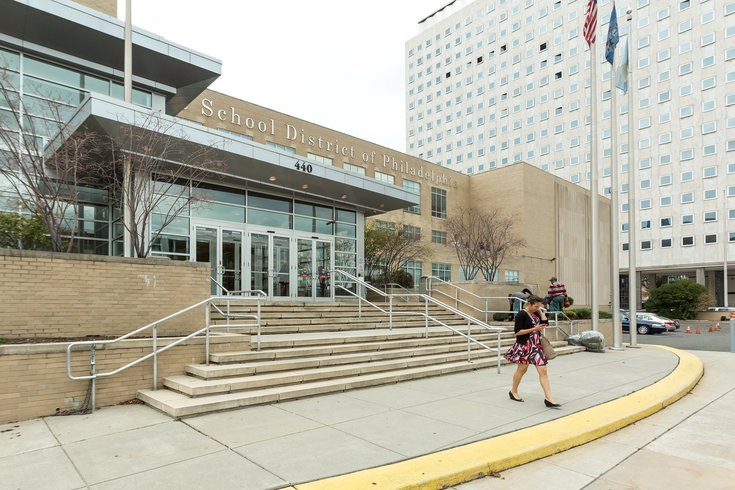
May 03, 2022
 Thom Carroll/For PhillyVoice
Thom Carroll/For PhillyVoice
The School District of Philadelphia launched a new website to track its infrastructure review of more than 200 buildings. Recommendations from the analysis will be presented to the Board of Education in spring 2023.
As the School District of Philadelphia determines the best use for each of its aging buildings, officials have unveiled a new website that will detail the state of each facility. The yearlong review process will allow district officials to make recommendations on how to improve the buildings' conditions and make them safer for students.
Each of the more than 200 buildings operated by the district will be scored on four key factors: facility condition, suitability for providing education, the weighted combined score of the first two factors and the utilization of each building. The recommendations will be presented to the Board of Education next spring.
The launch of the website follows years of concern over the crumbling conditions of some school buildings. In the fall of 2019, the district began its Comprehensive School Planning Review, which worked with a small subset of schools to determine the condition and best use of each school building.
That work, like much of the work the district has done to remediate asbestos and lead in its school buildings, was paused due to COVID-19. Now, after more than two years, officials have decided to expand that building review to include every school in the district.
The district will utilize $325 million in federal stimulus funds over the next four years to pay for improvements to facilities. The funding is a portion of more than $1 billion in American Rescue Plan funding the district is eligible to receive. It must be spent by September 2024.
"Anything's in the realm of possible in regards to what we can do to improve the conditions of our facilities. Not just for the infrastructure but for the educational experience of students," Reggie McNeil, the district's chief operating officer, told KYW. "Consolidation, maybe relocating students to another school. Maybe downsizing a school's infrastructure in order to put more resources toward that school."
Because each school is receiving a unique score based on its distinct characteristics, the district's recommendations will be based on what officials believe is best for each individual school, Vanessa Benton, the district's deputy chief of school planning and space management, told Chalkbeat.
Because the average public school building in Philadelphia is more than 75 years old, some upgrades are needed to ensure the facilities can meet the current needs of students.
Today @PHLschools is launching the interactive website for the Facilities Planning Process (FPP).
— CouncilmemberKGR (@CouncilwomanKGR) April 26, 2022
Join them for community conversations to learn more about the FPP & to provide your feedback for thoughts on your neighborhood! Dates below ⬇️
Learn more: https://t.co/g3rSGLYuEr pic.twitter.com/BT4EDTQ8R3
Concern about the condition of Philadelphia's aging school buildings is not new. A study released by the Pennsylvania Public Interest Research Group and PennEnvironment in February found that 98% of district schools that were tested for lead had contaminated drinking water samples.
The data was made public by the district as it continues to test each of the water outlets in its school buildings for lead contamination. Though a City Council ordinance required the district to compile the data by next April, the COVID-19 pandemic caused a delay in testing, according to the district.
District officials resumed testing in April, focusing on elementary schools. They anticipate that the testing will be complete by the 2023 deadline, ahead of the publication of the Facilities Master Plan.
Throughout May and June, the district will hold community conversations and information sessions about the Facilities Planning Process. People who want to attend can register online. Updates and recommendations for schools will be published on the new website.